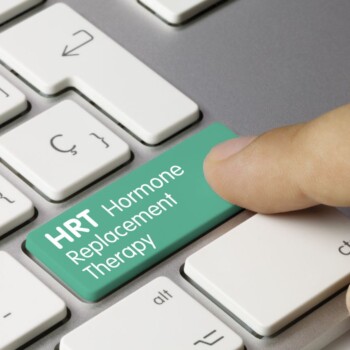Article Summary
Healthcare providers use various forms of hormone replacement therapy (HRT), including pellets, which are inserted under the skin and gradually release hormones. These pellets offer a convenient option compared to daily applications or injections, providing flexibility in dosage and formulation, especially beneficial for personalized and off-label hormone therapies.Healthcare providers employ a variety of dosage forms in hormone replacement therapy (HRT), including hormone injections, capsules, tablets, troches, orally disintegrating tablets (ODTs), nasal gels, topical creams and gels, vaginal creams, and suppositories. Another common form of delivery is sterile implantable hormone pellets used in hormone pellet therapy.
What Are Hormone Pellets, and How Do They Work?
Hormone pellets used in hormone pellet therapy, are about the size of a grain of rice. A licensed healthcare practitioner uses a device called a trocar to insert one or more of the pellets into a layer of fat tissue under the skin, typically in the buttocks or flank. The pellets then slowly dissolve and release the hormone into the patient’s body over time. They can elevate hormone levels in the bloodstream for three to six months.[1][2] These provide a convenient treatment option for patients who don’t want to self-inject hormones, apply creams or gels daily, or use other dosage forms, all of which require more frequent dosing than pellets.
The FDA originally approved pellets for testosterone replacement therapy in 1972, but they were not used widely until after 2008.[2][3] Currently, the only FDA-approved testosterone pellets are sold under the brand name Testopel®, and they contain 75 mg of testosterone per pellet.
However, insurance companies do not always cover Testopel® pellets or only partially cover them, leaving patients to cover some or all of the cost out of pocket. Additionally, the single 75 mg strength means that patients who require higher doses of testosterone may need eight to 12 pellets inserted three or four times per year.[1][2][4] This may not be affordable for many people. Patients who need lower doses of testosterone are also limited by the single 75 mg strength, since the lowest doses would be either 75 mg or 150 mg.
As the clinical fields who practice HRT progress toward personalized therapies, providers recognize the need for more dosing options to accommodate varying patient-specific responses to hormone medication. Custom dose options are also important for the emerging off-label uses in gender-affirming therapies, women’s health and many other conditions treated with HRT.
Compounded Hormone Pellets Provide Options
Fortunately, outsourcing facilities and compounding pharmacies can produce hormone pellets for hormone pellet therapy in strengths that are not commercially available. They can also formulate pellets with hormones that are not commercially available in this dosage form.
503A compounding pharmacies can create hormone pellets for specific patients with a prescription. They typically cannot produce large batches of medications, however, and they are not required to meet the stringent requirements that commercial manufacturers do.
503B outsourcing facilities, sometimes known as 503B pharmacies, can manufacture large batches of custom medications that are administered in healthcare settings (also known as office-use medications), and they can ship them directly to healthcare providers without the need for patient-specific prescriptions, which may be more convenient and cost effective. They also must comply with the FDA’s current good manufacturing practices (CGMPs), which are regulations that commercial manufacturers are required to meet as well. These high standards assure the strength, identity, quality and purity of the products. This makes 503B outsourcing facilities important partners for many healthcare practices that administer hormone pellets.
Compounded Testosterone Pellets
Compounded testosterone pellets help healthcare providers meet patient needs in two ways. First, they allow for a wider range of strengths. While Testopel® pellets are only available in the 75 mg strength, compounded pellets can be manufactured in strengths from under 20 mg to as much as 200 mg, allowing providers to easily accommodate patients who need low doses as well as those who need high doses. For example, a patient requiring about 1,000 mg of testosterone per pellet insertion would need 13 to 14 Testopel® pellets, whereas they would only need five compounded 200 mg pellets.
A wider range of strengths not only helps with the treatment of cisgender men, but it also provides options to physicians treating cisgender women and patients undergoing gender-affirming care, who typically require careful testosterone dosing that cannot be accommodated by commercial pellets. Additionally, testosterone pellets are not FDA approved for use in women; however, some providers are prescribing testosterone for women who may need hormone supplementation or who may be experiencing sexual issues.
Second, compounded testosterone pellets, used in hormone pellet therapy, allow providers to use pellets with different inactive ingredients. Testopel® and many compounded pellets use a small amount of stearic acid as a binding agent. However, some compounded pellets use an even smaller amount of stearic acid as well as cholesterol to bind the pellets together. Some providers prefer one type of pellet over the other. Regardless, if a patient is experiencing issues with one type of pellet, compounded pellets provide another option for them.
Compounded Estrogen Pellets
Compounded estrogen pellets help healthcare practitioners and their patients by providing a treatment option that is not available commercially. While there are FDA-approved estrogen medications in a few dosage forms, there are no approved pellets. However, this does not mean that patients would not benefit from access to this dosage form. As mentioned above, many providers and patients prefer implantable pellets because they consider them more convenient than hormone injections, topical creams and other dosage forms that require frequent dosing.
That’s why some outsourcing facilities and compounding pharmacies provide estradiol pellets for hormone pellet therapy. Estradiol (also known as E2) is a type of estrogen commonly used in HRT. In addition to providing access to an otherwise unavailable option for hormone supplementation, compounded estradiol pellets provide a wide range of dosing options, similar to testosterone pellets. They can range from less than 10 mg of estradiol per pellet to as much as 50 mg per pellet, giving providers the opportunity to customize treatment plans for each specific patient.
Empower Pharma offers both testosterone pellets and estradiol pellets in a wide range of strengths to accommodate all patient needs. We also offer trocars, trocar kits and ampoule openers so that practitioners can administer our pellets. Providers who already work with Empower Pharma can talk to their clinic liaison if they are interested in any of our hormone pellets. Providers who are interested in partnering with Empower Pharma can contact us about these products and everything else we can offer their practices and their patients.
Empower Testosterone Pellets
Testosterone Cholesterol Pellets
- Testosterone Cholesterol Pellet 12.5 mg
- Testosterone Cholesterol Pellet 25 mg
- Testosterone Cholesterol Pellet 37.5 mg
- Testosterone Cholesterol Pellet 50 mg
- Testosterone Cholesterol Pellet 100 mg
- Testosterone Cholesterol Pellet 200 mg
Testosterone Pellets
- Testosterone Pellet 12.5 mg
- Testosterone Pellet 25 mg
- Testosterone Pellet 37.5 mg
- Testosterone Pellet 50 mg
- Testosterone Pellet 100 mg
- Testosterone Pellet 200 mg
Estradiol Pellets
- Estradiol Pellet 6 mg
- Estradiol Pellet 10 mg
- Estradiol Pellet 12.5 mg
- Estradiol Pellet 25 mg
- Estradiol Pellet 37.5 mg
- Estradiol Pellet 50 mg
- Kaminetsky JC, Moclair B, Hemani M, Sand M. A phase IV prospective evaluation of the safety and efficacy of extended release testosterone pellets for the treatment of male hypogonadism. J Sex Med [Internet]. 2011 Apr [cited 2022 Sep 7];8(4):1186-96. Available from: https://academic.oup.com/jsm/article-abstract/8/4/1186/6844583?redirectedFrom=fulltext doi: 10.1111/j.1743-6109.2010.02196.x
- McCullough AR, Khera M, Goldstein I, Hellstrom WJ, Morgentaler A, Levine LA. A multi-institutional observational study of testosterone levels after testosterone pellet (Testopel(®)) insertion. J Sex Med [Internet]. 2012 Feb [cited 2022 Sep 7];9(2):594-601. Available from: https://academic.oup.com/jsm/article-abstract/9/2/594/6886881?redirectedFrom=fulltext doi: 10.1111/j.1743-6109.2011.02570.x
- McCullough A. A review of testosterone pellets in the treatment of hypogonadism. Curr Sex Health Rep [Internet]. 2014 [cited 2022 Sep 7];6(4):265-9. Available from: https://www.ncbi.nlm.nih.gov/pmc/articles/PMC4431706/ doi: 10.1007/s11930-014-0033-7
- Pastuszak AW, Mittakanti H, Liu JS, Gomez L, Lipshultz LI, Khera M. Pharmacokinetic evaluation and dosing of subcutaneous testosterone pellets. J Androl [Internet]. 2012 Sep-Oct [cited 2022 Sep 7];33(5):927-37. Available from: https://onlinelibrary.wiley.com/doi/full/10.2164/jandrol.111.016295 doi: 10.2164/jandrol.111.016295




